Dahlia plants are known for their stunning blooms and vibrant colors that add beauty to any garden. However, if you notice your dahlia leaves turning brown, it can be a cause for concern. Brown leaves on dahlia plants can indicate various issues, including watering problems, diseases, pests, and environmental stress factors.
Understanding the needs of dahlia plants is crucial to maintaining their health and beauty. Dahlia plants require well-draining soil, adequate sunlight, and regular watering to thrive.
However, too much or too little of any of these factors can lead to brown leaves and other problems. Therefore, it is essential to identify the underlying cause of the issue and take appropriate measures to treat it.
Common reasons for brown leaves on dahlia plants include watering problems, disease and pest-related issues, nutrient deficiencies, soil quality, and environmental stress factors. Identifying the cause of the problem is the first step towards treating it.
With proper care and attention, you can help your dahlia plants recover and continue to bloom beautifully.
Key Takeaways
- Brown leaves on dahlia plants can indicate various issues, including watering problems, diseases, pests, and environmental stress factors.
- Understanding the needs of dahlia plants is crucial to maintaining their health and beauty.
- Identifying the cause of the problem is the first step towards treating it.
You also shouldn’t miss:
- Why Are My Coral Bells Turning Brown?
- Why Are My Coffee Plant Leaves Turning Brown?
- Why Are My Canna Lily Leaves Turning Brown?
Understanding Dahlia and Its Needs
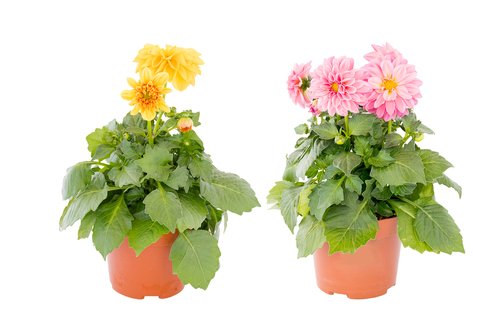
Dahlia is a beautiful flower that blooms in a variety of colors and sizes. It is a popular choice for gardeners due to its vibrant colors and the ease with which it can be grown. However, like any other plant, dahlias have specific requirements that must be met for them to grow and bloom to their full potential.
Dahlia’s Sunlight Requirements
Dahlias require full sun to grow and thrive. They need at least six hours of direct sunlight per day to produce healthy foliage and blooms. If they do not receive enough sunlight, they may struggle and show signs of stress, such as yellowing of leaves. In severe cases, the leaves may turn brown, go dry, and fall off.
It is important to note that planting dahlias in direct shade can cause them to die. Therefore, it is essential to choose a location that receives full sun for optimal growth.
Dahlia’s Soil and Nutrient Needs
Dahlias require well-draining soil that is rich in nutrients. The soil should be moist but not waterlogged, as overwatering can lead to root rot and cause the leaves to turn brown.
To ensure that dahlias receive the nutrients they need, it is recommended to fertilize the soil before planting. A balanced fertilizer with equal amounts of nitrogen, phosphorus, and potassium is ideal for dahlias. It is also recommended to add organic matter to the soil, such as compost or aged manure, to improve its quality.
Dahlia Leaves Turning Brown – 4 Common Problems
Dahlia leaves turning brown can be a cause for concern for gardeners, as they indicate that something is wrong with the plant. Brown leaves can be caused by a variety of factors, including overwatering, disease, pest infestation, nutrient deficiency, poor soil quality, and environmental stress factors.
Understanding the common reasons for brown leaves can help gardeners identify and address the underlying issues.
1. Overwatering and Underwatering
Overwatering and underwatering are common causes of brown leaves in dahlias. Overwatering can cause the roots to rot, which can lead to brown leaves, while underwatering can cause the leaves to wilt and turn brown.
To avoid overwatering or underwatering, gardeners should water dahlias deeply once a week, ensuring that the soil is moist but not waterlogged.
2. Disease and Pest Infestation

Diseases and pest infestations can also cause brown leaves in dahlias. Bacterial disease and wilt, soft rot, aster yellows, powdery mildew, gray mold, Verticillium & Fusarium Wilt, and smut are some of the common diseases that can cause brown leaves.
Pest infestations such as spider mites, thrips, and aphids can also cause brown leaves. Gardeners should keep an eye out for signs of disease or pest infestation and treat them promptly with neem oil or other appropriate treatments.
3. Nutrient Deficiency and Poor Soil Quality
Nutrient deficiency and poor soil quality can also cause brown leaves in dahlias. If the soil is too acidic or alkaline, it can cause nutrient deficiencies, which can lead to brown leaves.
Gardeners should ensure that the soil pH is between 5.8 and 6.2, which is the optimal range for dahlias. They should also fertilize dahlias regularly with a balanced fertilizer to ensure that they receive all the nutrients they need.
4. Environmental Stress Factors
Environmental stress factors such as extreme temperatures, too much or too little sunlight, and strong winds can also cause brown leaves in dahlias.
Gardeners should ensure that dahlias receive at least six hours of direct sunlight each day and that they are protected from strong winds. They should also avoid planting dahlias in areas that are prone to temperature extremes, such as areas that are too hot or too cold.
Watering Issues and Their Impact
Dahlia plants require proper watering to thrive. Overwatering or underwatering can cause the leaves to turn brown. In this section, we will discuss the effects of both overwatering and underwatering on dahlia plants.
Effects of Overwatering
Overwatering is a common cause of brown leaves in dahlias. When the soil is too moist, it can cause the roots to rot, leading to brown leaves. Overwatering can also cause fungal diseases that can further damage the plant.
To avoid overwatering, it is essential to ensure that the soil has proper drainage. Dahlia plants prefer well-drained soil that allows excess water to drain away. If the soil is not well-drained, it can retain too much moisture, leading to overwatering.
Effects of Underwatering
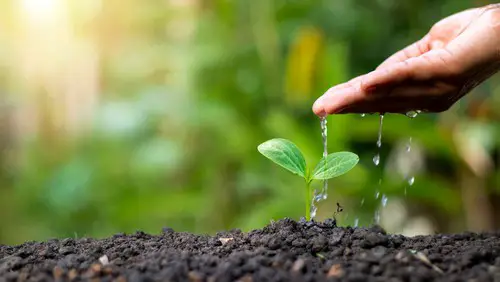
Underwatering dahlias can also cause the leaves to turn brown. When the soil is too dry, the plant cannot absorb enough water, leading to brown leaves. Underwatering can also cause the plant to become stressed, making it more susceptible to pests and diseases.
To avoid underwatering, it is essential to ensure that the soil is moist. Dahlia plants prefer moist soil that is not too wet or too dry. It is important to water the plants regularly to ensure that they receive enough water.
In summary, improper watering can cause dahlia leaves to turn brown. Overwatering can cause the roots to rot and lead to fungal diseases, while underwatering can cause the plant to become stressed and more susceptible to pests and diseases. To avoid watering issues, it is important to ensure that the soil is well-drained and moist.
Disease and Pest Related Problems
Dahlias are susceptible to a variety of diseases and pests that can cause their leaves to turn brown. Some common diseases that affect dahlias include bacterial disease, fungal disease, and viral disease.
Bacterial diseases such as bacterial wilt and soft rot can cause the leaves of dahlias to turn brown and wilt during the day. These diseases typically develop in warm and moist conditions.
Fungal diseases such as powdery mildew, gray mold, and rust can also cause the leaves of dahlias to turn brown and develop spots. These diseases thrive in humid conditions and can spread quickly through the plant.
Pests such as thrips, aphids, spider mites, and leafhoppers can also cause dahlia leaves to turn brown. Thrips, in particular, can transmit the necrotic spot virus, which slowly turns the leaves of the dahlias to yellow, then brown, and eventually black or fall off.
Scale insects can also cause damage to the leaves of dahlias, leading to browning and wilting.
To prevent disease and pest infestations, it is important to keep the soil pH at 5.8 to 6.2 and ensure that the soil is slightly damp. It is also important to provide dahlias with at least 6 hours of direct sunlight. Additionally, treating pests and diseases with neem oil can help prevent further damage to the plant.
If the dahlias are already affected by disease or pests, it is important to identify the problem and take appropriate action. For example, if the dahlias are affected by verticillium and fusarium wilt, which is a fungal disease, it is important to remove and destroy the affected plants and avoid planting dahlias in the same location for at least three years.
Similarly, if the dahlias are affected by necrotic spot virus, it is important to remove and destroy the affected plants and control the thrips population in the area.
Nutrient Deficiencies and Soil Quality
Dahlia plants require high-quality soil that is rich in nutrients to grow and thrive. If the soil is poor or lacks essential nutrients, it can lead to dahlia leaves turning brown. In this section, we will discuss the importance of soil quality and nutrient deficiencies in dahlia plants.
Soil Quality
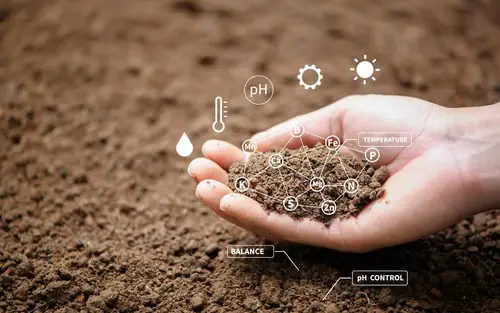
The quality of soil plays a crucial role in the growth and development of dahlia plants. Soil that is too sandy or too heavy with peat can lead to poor drainage, which can cause root rot and other diseases. Additionally, soil that is too dry or too wet can also lead to problems with dahlia growth.
To ensure that the soil is of high quality, it is recommended to loosen the soil before planting. This will help to improve drainage and ensure that the soil is well-aerated. Additionally, it is important to ensure that the soil is at the right pH level, which should be between 5.8 to 6.2.
Nutrient Deficiencies
Dahlia plants require a variety of nutrients to grow and thrive, including nitrogen, phosphorus, and potassium. A lack of these nutrients can cause dahlia leaves to turn brown and can also lead to poor growth and development.
To ensure that dahlia plants have access to the necessary nutrients, it is recommended to use fertilizer. Fertilizer can be applied before planting and throughout the growing season. It is important to follow the instructions on the fertilizer packaging to ensure that the correct amount is applied.
Environmental Stress Factors
Dahlia leaves turning brown can be attributed to a variety of environmental stress factors. These factors can cause the leaves to wilt, dry out, and eventually turn brown. Here are some of the common environmental stress factors that can cause dahlia leaves to turn brown:
1. Shade
Shade is one of the most common reasons why dahlia leaves turn brown. Dahlias require at least 6 hours of direct sunlight per day to thrive. When they are planted in areas with too much shade, the leaves will start to turn yellow, and eventually brown. If the plant is not moved to a sunnier area, it will continue to decline.
2. Sunburned
On the other hand, too much direct sunlight can also cause dahlia leaves to turn brown. When the leaves are exposed to too much direct sunlight, they can become sunburned.
This can cause the leaves to dry out, turn brown, and eventually fall off. To prevent sunburn, it is important to provide some shade for the plant during the hottest part of the day.
3. Frost Damage
Frost damage can also cause dahlia leaves to turn brown. If the plant is exposed to frost, the leaves can become damaged and turn brown. To prevent frost damage, it is important to cover the plant with a frost cloth or move it to a warmer location.
4. Air Circulation
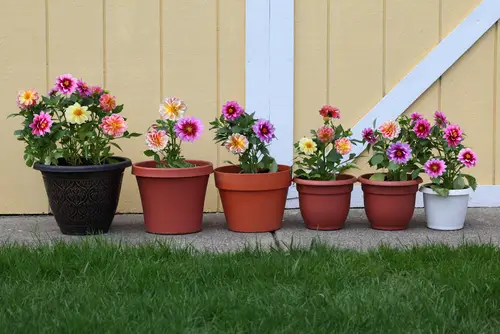
Poor air circulation can also cause dahlia leaves to turn brown. When the air is stagnant, the leaves can become damp and prone to fungal diseases. This can cause the leaves to turn brown and eventually fall off. To prevent this, it is important to provide good air circulation around the plant.
5. Grounded Dahlia
If the dahlia is planted in poorly drained soil, the roots can become waterlogged. This can cause the leaves to turn brown and eventually fall off. To prevent this, it is important to plant the dahlia in well-drained soil.
Identifying and Treating the Problem
Dahlia leaves turning brown can be a sign of various issues, including fungal diseases, pests, and environmental stress. Identifying the problem is the first step towards finding the right treatment.
Diagnosis
To diagnose the issue, it’s essential to examine the leaves and the surrounding soil carefully. If the leaves are turning brown from the tips, it could be a sign of water stress, while brown spots on the leaves can indicate fungal diseases such as powdery mildew or soft rot.
If the leaves are curling or wilting, it could be due to insect infestation or root rot.
Treatment
Once the issue has been identified, the next step is to treat it. Here are some common treatments for the most common problems:
- Fungal diseases: Fungal diseases can be treated with fungicides, such as neem oil or copper-based fungicides. It’s essential to follow the instructions on the label and apply the fungicide at the first sign of the disease.
- Pests: Sap-sucking pests, such as aphids or spider mites, can be treated with insecticides. Garlic or banana peels can also be used as a natural repellent.
- Environmental stress: If the leaves are turning brown due to environmental stress, such as overwatering or underwatering, adjusting the watering schedule can help. It’s important to water the plants deeply but not too frequently.
- Root rot: If the roots are mushy or crumbly, it’s a sign of root rot. To treat root rot, it’s essential to remove the affected plant and the surrounding soil. The remaining plants should be treated with a fungicide.
- Verticillium wilt: If the leaves are wilting and turning brown, it could be due to verticillium wilt. Unfortunately, there is no cure for this disease, and the affected plants should be removed to prevent the spread of the disease.
Frequently Asked Questions
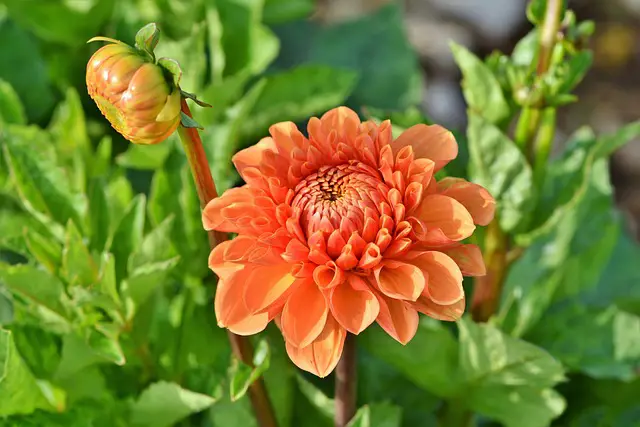
What causes dahlia leaves to turn brown?
Dahlia leaves can turn brown due to several reasons, including overwatering, underwatering, fungal or bacterial diseases, pests, and viruses. It is essential to identify the underlying cause to take appropriate action.
How do I prevent dahlia leaves from turning brown?
To prevent dahlia leaves from turning brown, ensure that the plant receives adequate water and sunlight. Avoid overwatering or underwatering the plant and keep it away from pests and diseases. Regularly inspect the plant for any signs of damage or discoloration and take prompt action.
Are brown dahlia leaves a sign of disease?
Brown dahlia leaves can be a sign of disease, but it may also be due to other factors such as overwatering or underwatering. It is essential to examine the plant closely to determine the underlying cause.
Can overwatering cause dahlia leaves to turn brown?
Yes, overwatering can cause dahlia leaves to turn brown. Overwatering can lead to root rot, which can cause the leaves to wilt, turn yellow, and eventually brown. Ensure that the soil is well-draining and avoid overwatering the plant.
What are some common reasons for dahlia leaves to turn brown?
Some common reasons for dahlia leaves to turn brown include fungal or bacterial diseases, pests, viruses, overwatering, and underwatering. It is essential to identify the underlying cause to take appropriate action.
What should I do if my dahlia leaves start turning brown?
If your dahlia leaves start turning brown, examine the plant closely to determine the underlying cause. If it is due to overwatering, reduce the frequency of watering and ensure that the soil is well-draining. If it is due to pests or diseases, take appropriate action to treat the plant.

Hey, I’m Lisa and I’ve been an avid gardener for over 30 years. I love writing, talking and living in the garden! Feel free to connect with me on my socials below


